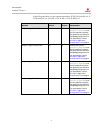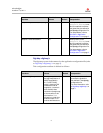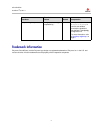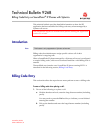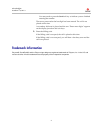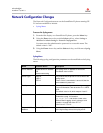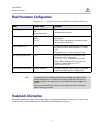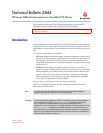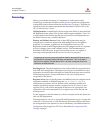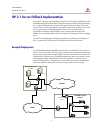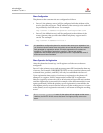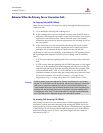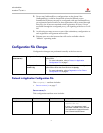
Technical Bulletin
SoundPoint
®
IP, SIP 2.1
6
Changes From Previous Phone Behavior (Releases Before SIP 2.1)
Recommended Practices for Server Fallback Deployments
The best method for ensuring optimum server redundancy is to deploy two
identical call servers and use either DNS methods or “IP Address Moving”
together with call server recommended practices for maintaining
synchronization of records between the redundant servers. This is termed
fail-over (refer to Terminology on page 2). Deployment varies dependent on
the SIP call server being used. Consult your SIP call server supplier for
recommended practices for fail-over configuration.
In situations where server redundancy for fall-back purpose is used, the
following measures should be taken to optimize the effectiveness of the
solution:
1. Deploy an on-site DNS server to avoid long call initiation delays that can
result if the DNS server records expire.
Before SIP 2.1 In SIP 2.1
A Line is only capable of maintaining
one server registration.
A Line will maintain registrations with
all servers that are configured as
registrar servers.
If two servers are configured (for
example,
reg.1.server.1.address =
"server1"
and
reg.1.server.2.address =
"server2"
, the phone will initially
register with Server1 as the working
server. Phone calls will be placed and
received through Server1 only. If the
registration to Server1 fails or expires,
then the phone will attempt to register
with Server2. If this registration
succeeds, then incoming calls will be
received using this server. At this point,
Server2 takes over as the working
server.
If two servers are configured (for
example,
reg.1.server.1.address =
"server1"
and
reg.1.server.2.address =
"server2"
, the phone will register with
both Server1 as the working and
Server2. Phone calls will be placed
through Server1, but may be received
through either Server1 or Server2. If
the registration to Server1 fails or
expires, then the Server2 will become
the working server.
The phone will continually attempt
registration using SIP registration
protocols with Server1. At the point that
this succeeds, the registration with
Server2 will expire and Server1 will
resume as the working server.
The phone will continually attempt to
register with Server1 and, when this is
successful, will switch back to using
Server1 as the working server. The
Server2 registration will be maintained.
The phone attempts to maintain full SIP
functionality with each server, but it is
questionable how effective this is.
Only basic SIP registration for INVITE
functions is maintained with servers
other than the primary server.



